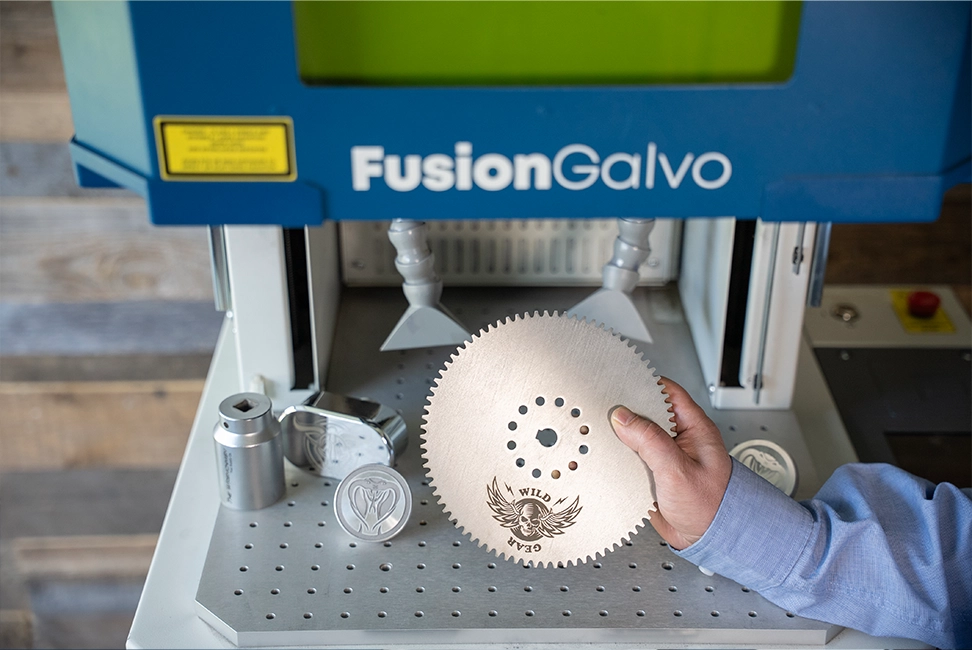Marcação de peças automotivas com máquinas a laser de fibra
A indústria automóvel utiliza amplamente lasers de fibra planos e lasers de fibra galvo para vários processos de fabrico. Os lasers de fibra são utilizados na fabricação de automóveis para marcar permanentemente peças e componentes com números de série, logotipos, códigos de barras e muito mais. Podem marcar e gravar em materiais metálicos e não metálicos, tornando-os muito úteis para fabricantes de automóveis.
Materiais compatíveis
Os engenheiros projetaram máquinas a laser de fibra e galvo para marcar metais nus e uma variedade de plásticos de engenharia. Os materiais comuns marcados com uma máquina a laser de fibra e/ou galvo incluem:
- Metais: aço inoxidável, alumínio, cobre, latão, titânio, ouro, prata, platina e outros.
- Plásticos: Plásticos: ABS, policarbonato, acrílico, polietileno e outros.
- Materiais de engenharia: pastilhas de silício, compósitos de carbono, etc.
Aplicações comuns do laser na indústria automóvel
Os fabricantes utilizam lasers de fibra plana ou galvo para marcar peças de automóveis devido à sua precisão, rapidez e flexibilidade. Aqui estão algumas aplicações comuns que podem ser realizadas em ambos os tipos de lasers.
Números de série e marcação VIN
As peças automotivas podem possuir um número de série exclusivo ou VIN para rastreamento e controle de qualidade. O número de série ou VIN identifica cada peça individualmente. Isso ajuda a garantir que a peça atenda aos padrões de qualidade. Também auxilia no rastreamento da peça ao longo do processo de fabricação.
Códigos de barras e códigos QR
A marcação a laser de códigos de barras ou códigos QR em peças automotivas auxilia no seu rastreamento automático. Também auxilia na gestão do inventário e na garantia da qualidade na cadeia de abastecimento.
Marcação de conformidade
As peças automotivas necessitam de marcação para cumprir normas como a marcação CE, a conformidade com a RoHS ou certificações de segurança. Os lasers de fibra podem marcar com precisão símbolos de conformidade, logótipos ou texto em peças.
Medidas contra a falsificação
A marcação a laser pode ajudar a prevenir produtos falsificados, adicionando recursos de segurança às peças automotivas. Essas características podem incluir texto pequeno, códigos secretos ou marcas que indicam se alguém alterou as peças. Isso contribui para impedir a falsificação.
Identificação da peça
Rotular as peças com números ajuda a identificá-las durante a montagem, reparação e manutenção.
Logotipo e marca
Os lasers podem adicionar logótipos, nomes de marcas ou outros elementos de identificação de marca a peças automotivas.
Carimbo de data e hora
Colocar datas nas peças de automóveis ajuda a controlar o inventário e as garantias.
Texturização de superfícies a laser
A texturização a laser da superfície pode reduzir o atrito em peças automotivas, como pastilhas de freio, placas de embreagem e engrenagens. Isso pode ajudá-los a ter um melhor desempenho e a durar mais tempo.
Rastreabilidade dos materiais
Os materiais de marcação utilizados em peças automotivas, como composição da liga ou grau do material, fornecem informações cruciais para os processos de reciclagem, manutenção e reparação.
Acessórios para montagem de componentes
A marcação a laser pode auxiliar na montagem de peças automotivas, exibindo instruções, guias ou marcações nas peças. Isso facilita a montagem e reduz erros.
A escolha perfeita
Os sistemas de laser de fibra plana e fibra galvânica podem marcar materiais com rapidez e precisão para a fabricação automotiva. Podem marcar metais, plásticos, cerâmicas e compósitos com precisão. Estas características tornam-nas uma solução ideal para várias aplicações de marcação de peças automotivas.
DESTAQUE PARA O CLIENTE:
Que tipos de notas pode obter?
Grave uma variedade de marcas comuns de forma rápida e fácil
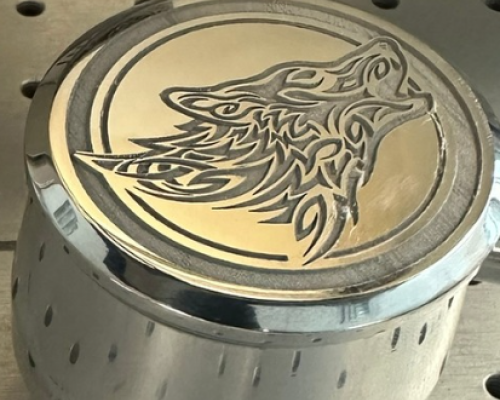
gravar
As pessoas frequentemente utilizam a gravação para fins industriais, para marcar ferramentas ou peças com números de série, logótipos e códigos de barras. O processo de gravação remove material do metal. O material é removido para criar uma marca semelhante a um código de barras ou código de matriz de dados. Isto cria uma marca clara no metal através de uma gravação superficial.
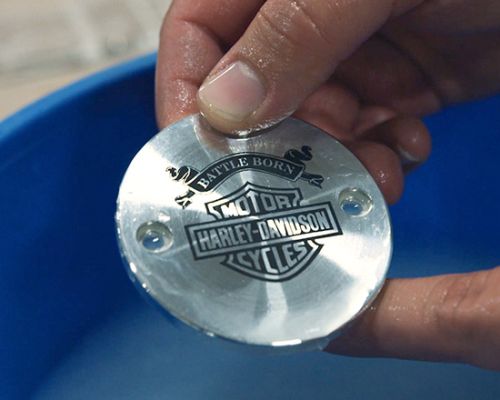
Recozimento
Uma marca de recozimento é semelhante ao processo de polimento. O laser aquece o metal até quase o ponto de fusão, provocando uma mudança de cor na camada superior do material. Dependendo do tipo de metal, o recozimento frequentemente confere um aspecto escuro, quase iridescente. Da mesma forma, é possível utilizar as configurações dos parâmetros de fibra e galvo para produzir cores distintas em determinados materiais.
Como nenhum material é removido do metal, esta técnica é frequentemente utilizada em dispositivos médicos utilizados no interior do corpo humano. O recozimento cria uma marca escura sem cortes ou gravações superficiais, ao contrário da marcação e da gravação.

polaco
Um feixe de laser aquece a superfície do material para criar metal polido, também conhecido como "espelhado". A superfície então arrefece, resultando num acabamento brilhante. Mais comum em metais com acabamento mate, esta técnica cria marcas que podem parecer quase holográficas.
Ao contrário da gravação, o calor altera o acabamento do metal sem remover qualquer material dele. O aspecto polido é comum em placas sofisticadas e rótulos de produtos de alta qualidade. É utilizado para conferir-lhes uma aparência sofisticada e única. O acabamento espelhado cria um efeito tom sobre tom, realçando o metal.
As pessoas também utilizam esta técnica em óxido preto ou metais com revestimentos escuros semelhantes. É possível clarear o revestimento de óxido/preto ajustando as configurações. Isso revela a cor do metal por baixo. O resultado é uma aparência contrastante tom sobre tom.
Metais comuns para marcar com máquinas Epilog Laser de fibra ou Galvo
Alumínio anodizado
A gravação a laser em alumínio anodizado com uma máquina Epilog Laser é uma excelente forma de criar marcas nítidas e duradouras em metal. A anodização adiciona uma camada protetora colorida ao alumínio, e o laser remove essa camada para revelar o metal mais claro por baixo. Isso cria um contraste acentuado que se destaca bem.
As marcas gravadas são permanentes e resistentes ao desgaste, às intempéries e aos produtos químicos. Isto torna o processo ideal para adicionar logótipos, números de série, códigos de barras ou desenhos a objectos como eletrónica, ferramentas e sinais. Tanto os lasers de CO2 como os de fibra podem marcar alumínio anodizado de forma muito eficiente e com elevada precisão, tornando-os opções ideais para marcar superfícies metálicas.
Aço inoxidável
A marcação de aço inoxidável com uma máquina de fibra ou galvânica da Epilog oferece vantagens significativas na indústria automóvel.
Quando marcado com uma máquina laser de fibra ou galvânica, os utilizadores podem esperar marcas permanentes e duradouras em peças e componentes de aço inoxidável. Estas marcas laser são resistentes ao desgaste, aos produtos químicos, ao calor e à corrosão, o que as torna ideais para ambientes agressivos e rastreabilidade crítica.
As máquinas laser de fibra e de galvanização marcam o aço inoxidável com uma precisão e um detalhe incrivelmente elevados, assegurando que os códigos de barras e os códigos QR também podem ser facilmente lidos para fins de seguimento e localização.
Titânio
A marcação a laser de titânio com uma máquina Epilog oferece várias vantagens críticas, especialmente para o fabrico de peças automóveis de alto desempenho, onde tanto o desempenho como a conformidade são importantes.
O titânio forma naturalmente uma camada protetora de óxido, e a marcação a laser (especialmente o recozimento) melhora essa camada. Neste tipo de metal, os lasers de fibra ou galvânicos produzem marcas que são quimicamente estáveis, biocompatíveis e resistentes à abrasão.
Quais são as diferenças entre máquinas a laser de fibra plana e máquinas a laser de fibra galvo?
Lasers de fibra planos e lasers galvo são dois tipos de sistemas laser utilizados para diferentes aplicações. Apresentam diferenças únicas no seu design, capacidades e utilizações adequadas.
Sistema a laser: |
Cama plana |
FUSION GALVO |
Design: |
|
|
Velocidade/Precisão: |
|
|
Por que a marcação a laser é superior à marcação por pontos?
-
Alta precisão
A marcação a laser é precisa e perfeita para criar designs detalhados, textos pequenos e gráficos sem distorção. A marcação por pontilhagem, embora precisa, pode apresentar limitações na obtenção de detalhes finos, especialmente em superfícies curvas ou irregulares.
-
Processo sem contacto
A marcação a laser é um processo sem contacto, o que significa que a ferramenta de marcação não entra em contacto com a peça de trabalho. Isso reduz o risco de danificar peças delicadas e diminui a probabilidade de erros. A marcação por pontilhamento envolve o contacto direto com a superfície.
-
Versatilidade
Podem marcar diversos materiais, como metais, plásticos, cerâmicas, compósitos e muito mais. Estes sistemas não requerem muitas alterações de configuração. A marcação por pontilhamento pode exigir ajustes para diferentes materiais ou acabamentos. Por outro lado, a marcação a laser oferece maior flexibilidade e pode adaptar-se a várias necessidades de fabrico.
-
Velocidade e eficiência
A marcação a laser é mais rápida do que a marcação por pontos, especialmente para desenhos complexos ou grandes lotes de peças, aumentando a velocidade. Os sistemas a laser podem atingir altas velocidades de marcação, mantendo qualidade e precisão consistentes, resultando em maior rendimento e produtividade nos processos de fabricação automotiva.
-
Qualidade e Estética
A marcação a laser cria marcas com aparência agradável, com bordas suaves e contraste, tornando as peças marcadas com melhor aparência e mais valiosas. A marcação por pontilhamento, embora durável, pode produzir marcas com bordas mais irregulares e aparência menos uniforme, especialmente em determinados materiais.
-
Sem consumíveis
A marcação a laser não requer consumíveis, como brocas de gravação ou cartuchos de tinta. Isto significa custos mais baixos e menos manutenção em comparação com a marcação por pontilhamento, que requer a substituição regular dos pinos de marcação.
Como fazer:
Escolher entre uma máquina a laser de fibra plana e uma máquina a laser galvo
A escolha entre um laser de fibra plano e um laser galvo depende de vários fatores. Esses fatores incluem as necessidades da sua aplicação, orçamento, volume de produção e recursos desejados.
Considere os seguintes pontos ao tomar a sua decisão.
- Considere os materiais que irá utilizar e as tarefas que o sistema a laser deverá realizar. As empresas utilizam lasers Galvo para marcar e gravar objetos pequenos ou curvos devido à sua rápida digitalização e controlo preciso. Os lasers de fibra planos são adequados para marcar itens grandes ou várias peças pequenas idênticas.
- Os lasers Galvo são mais rápidos do que os lasers de fibra planos para marcação e gravação, especialmente em objetos pequenos ou complexos. Se velocidade e rendimento são essenciais para a sua aplicação, um laser galvo pode ser a melhor escolha.
- Os lasers Galvo são excelentes para trabalhos precisos e exatos, perfeitos para tarefas que exigem detalhes finos ou designs complexos. Os lasers de fibra planos também podem oferecer alta precisão, mas são mais lentos do que os sistemas galvo.
- Considere o tamanho do seu espaço de trabalho e as suas restrições orçamentais. Os sistemas laser Galvo possuem uma área de trabalho menor, mas podem ser mais económicos do que as máquinas planas. Os lasers de fibra planos têm uma área de trabalho muito maior, mas podem ser mais caros inicialmente.
- Considere as suas necessidades futuras e se o sistema a laser escolhido pode acomodar o potencial crescimento e expansão do seu negócio. Selecione um sistema que ofereça escalabilidade e flexibilidade para se adaptar às mudanças nas demandas e às novas aplicações.
Considere as suas necessidades, orçamento e objetivos futuros ao decidir entre um laser de fibra plano e um laser galvo. Considere as tarefas específicas para as quais necessita do laser e como cada tipo de laser pode atender a essas necessidades. Avalie os seus recursos financeiros e determine quanto pode investir numa máquina a laser.
Por último, considere os seus objetivos comerciais a longo prazo e como o laser escolhido irá ajudá-lo a alcançá-los. Cada tipo de laser possui suas próprias vantagens e desvantagens que podem influenciar a sua decisão.
A sua decisão deve basear-se, em última instância, no que melhor apoiará o crescimento e o sucesso da sua empresa no futuro. É importante considerar cuidadosamente esses fatores e, se necessário, conversar com especialistas ou fornecedores antes de tomar uma decisão.
O que é que se segue?
Se necessita de marcação em metal ou plástico, entre em contacto com a Epilog para uma demonstração dos nossos sistemas em ação. Pode trazer os seus materiais mais comuns e descobrir exatamente como eles reagem nas máquinas de fibra e galvo.
Pode enviar-nos amostras para o nosso laboratório e nós testá-las-emos para si. Podemos auxiliá-lo com o material e fornecer informações detalhadas sobre a máquina utilizada, os parâmetros do laser e muito mais.
Ligue para 888-437-4564 ou envie um e-mail para sales@epiloglaser.com para agendar uma demonstração ou saber mais!
A gravação é fácil!
Imprima ao seu laser a partir de qualquer software gráfico
Configuração da obra de arte
Design no seu software favorito
Definições do material
Atribua a velocidade e potência consoante o material
Comece a Gravar!
Manda o trabalho ao laser e pressione vai!
Quais são as máquinas mais adequadas para marcar peças automotivas?
-
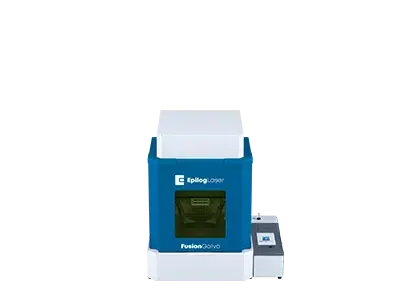
Fusion Galvo
Máquina de marcação de metalÁrea de trabalhoMax 6″ x 6″
(152 x 152 mm)Tipofibra
Potência30-100
(MOPA)O Fusion Galvo é o sistema de marcação industrial de metal da Epilog que apresenta uma área de trabalho ajustável, velocidades relâmpago e o poderoso sistema de câmaras IRIS™ para colocação rápida e precisa de obras de arte. -
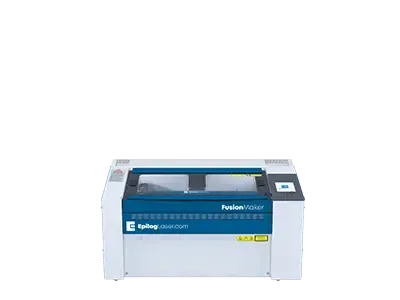
Fusion Edge 12
Série BusinessÁrea de trabalho24″ x 12″
(610 x 305mm)TipoCO2, Fibra
PotênciaCO2: 50-60
Fibra: 30O nosso sistema laser compacto está disponível em várias configurações de potência e inclui até 120 IPS/3.05 velocidades de gravação m/s. Também disponível com uma fonte laser de fibra. -
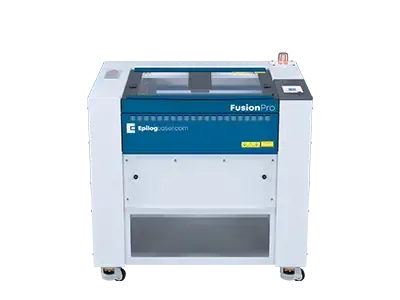
Fusion Pro 24
Série IndustrialÁrea de trabalho24″ x 24″
(610 x 610mm)TipoCO2, Fibra, Dupla
PotênciaCO2: 60-100
Fibra: 60O mais pequeno da nossa série industrial Fusion Pro Laser, o Pro 24 está disponível em 60, 80 ou 100 watts e pode ser configurado como um sistema de fonte dupla com capacidades de laserde CO2 e de fibra. -
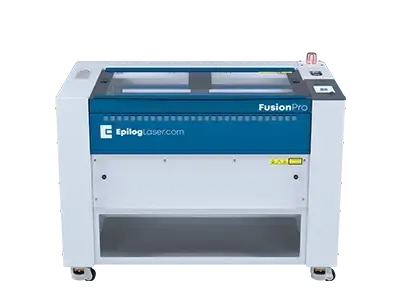
Fusion Pro 36
Série IndustrialÁrea de trabalho36″ x 24″
(914 x 610mm)TipoCO2, Dual
PotênciaCO2: 60-200
Fibra: 30-60Como todos os sistemas da série Fusion Pro Laser, o Pro 36 inclui o Sistema de Câmaras IRIS da Epilog, juntamente com velocidades de gravação de até 165 polegadas por segundo (4,2 m/s). -
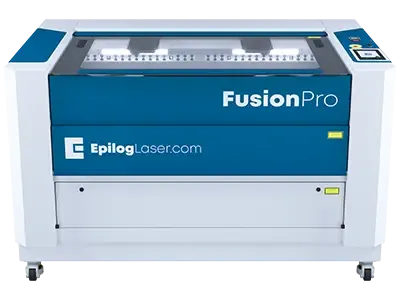
Fusion Pro 48
Série IndustrialÁrea de trabalho48″ x 36″
(1219 x 914 mm)TipoCO2, Dual
PotênciaCO2: 80-200
Fibra: 60O maior dos Fusion Pros, este sistema industrial está disponível em configurações de 80, 100, 120 e 200 watts, como um sistema de fonte dupla, e pode ser ligado em rede através de Ethernet incorporada, USB ou sem fios.
